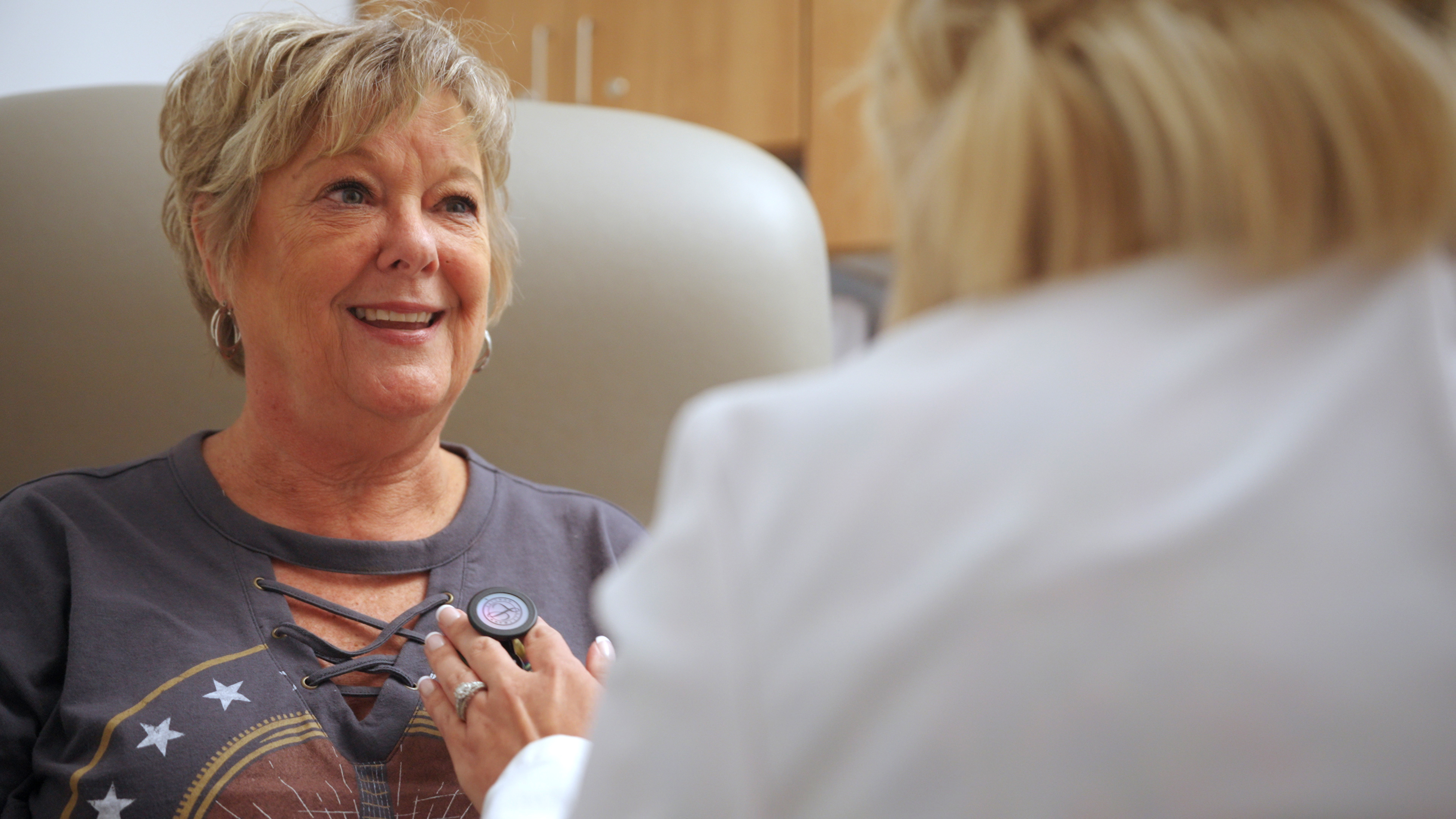Clinical Trials
What are clinical trials?
Clinical trials are studies, managed by government agencies, educational institutions, private not-for-profit organizations, or commercial businesses. They develop and evaluate the effectiveness of new treatments for diseases.
What are some types of clinical trials?
According to the National Cancer Institute, there are different types of cancer clinical trials, including:
- Prevention trials - These are designed to test therapies that might keep cancer from developing in people who have not previously had cancer. Some cancer prevention trials are designed to test treatments that might prevent a new type of cancer from developing or keep cancer from coming back in people who have already had cancer.
- Early detection or screening trials - These are done to evaluate ways to find cancer, especially in its early stages.
- Treatment trials - Such trials test new therapies in people who have cancer.
- Quality of life studies - These are done to improve comfort and quality of life for people who have cancer.
- Behavioral studies - Such studies are done to evaluate ways of changing behaviors that cause cancer, such as tobacco use.
- Genetic studies - These studies address how your genes affect finding, diagnosing, and treating cancer.
What are the phases of a clinical trial?
Most clinical research progresses in an orderly series of steps or phases:
Phase 0 trials - These are the earliest steps in testing new treatments in humans. A small number of people are studied and the focus is on learning how the agent is processed by the body and how the agent affects the body. No information is gathered on safety or effectiveness in treating cancer.
Phase I trials - These are the first studies to evaluate how a new therapy should be given, how often, and in what dosage. The focus is to determine safety (drug dose, device safety, or other therapy’s safety) for the next phase of testing.
Phase II trials - These provide preliminary information about how well the new therapy works. They also generate more information about its safety and benefits. A Phase II study usually focuses on a particular type of cancer.
Phase III trials - These compare a promising new therapy, combination of treatments, or procedure with a current standard of treatment. These trials often enroll large numbers of people. They may be done at healthcare providers’ offices, clinics, and cancer centers nationwide, or even worldwide.
Phase IV trials - These include the continuing evaluation that takes place after FDA approval, when the therapy is already available for general use.
What is a clinical trial protocol?
Clinical trial protocols are the action plans or guidelines that must be followed during the course of any study. Guidelines may cover:
• The design of the study - what will be studied and how
• Who may participate - criteria for patients who enter the study
• What treatments and medical tests will be used to follow the participants
• Specific research questions
• What information will be collected
Several research centers may be involved in the study. Each uses the same protocols to make sure that information from all centers can be combined and compared.
Where are trials conducted?
Large cancer centers, university hospitals, local medical centers, or healthcare provider offices may be included in managing clinical trials. Informed consent is a process designed to protect potential participants through detailed description of important facts about a specific clinical trial. There may be only one or two locations involved in a particular study, or hundreds around the country, or even around the world.
Who can participate in a trial?
Each protocol in a trial defines specific characteristics, called eligibility criteria, that participants should have in order to participate in the study. Characteristics may include type of disease and its stage, as well as the participant’s age and general health.
Eligibility criteria help researchers know for sure that the study results answer the research question and identify who will benefit in the future from the approach being studied.
How are trial participants protected?
There are several procedures in place, as part of the protocols, to protect the safety of the participants. Informed consent is a process designed to protect potential participants through detailed description of important facts about a specific clinical trial. Two groups that oversee the safety procedures are the:
- Organization that sponsors the study, for example, the National Cancer Institute
- Institutional Review Board (IRB) that oversees clinical research in the healthcare institution. The IRB includes healthcare providers, consumers, and sometimes members of the clergy, who do not have any personal interest in the results of the study. As neutral reviewers, they make sure that the study is conducted fairly and that there is not a high probability of harm to the participants.
Some clinical trials, especially Phase III trials, also have a special group called a Data Safety and Monitoring Committee. This group looks at the test results, monitors the safety of the participants, and decides whether the study should go forward as originally planned.
For information on how to participate in a clinical trial, please talk with your healthcare provider.
Clinical Trials: Should You Participate?
Being involved in a clinical trial has risks and benefits. Being informed and asking lots of questions can help you make a decision.
A clinical trial is a research study that uses human volunteers to try to answer a specific question.
Whenever a new arthritis drug or breast cancer treatment hits the market, clinical trials are an important step in the approval process.
Clinical trials are held for different reasons, says the National Institutes of Health (NIH):
- Treatment trials test experimental treatments, new combinations of drugs or new types of surgery or radiation therapy.
- Prevention trials test new ways to prevent certain diseases or prevent a disease from returning.
- Diagnostic trials look at new tests or procedures that diagnose disease.
- Screening trials test new methods for finding disease.
- Quality of life trials look at new ways to improve quality of life for people with chronic illness.
Clinical trials are done in phases, designated as I through IV. Each phase has a different purpose, the NIH says:
- Phase I trials use a small group of people, usually 20 to 80, to check the safety, dosage, and side effects of a treatment.
- Phase II trials expand to 100 people to 300 people and look at the effectiveness and safety of a treatment.
- Phase III trials include 1,000 people to 3,000 people and try to confirm the results of the earlier trials and compare the new treatment with other commonly used treatments. More data are collected to help determine safe usage.
- Phase IV trials are done after the treatment is approved for the general public. These trials collect additional information on risks and benefits of the new treatment.
The good news is that most clinical trials test treatments that already have shown some promise of being more effective than existing therapies.
In addition, all U.S. clinical trials must be overseen by an institutional review board (IRB) at each site participating in the research. The IRB helps make sure of low risks and proper trial procedures.
All clinical trials have guidelines that describe the criteria for participants. To ensure that a trial’s results are reliable, people are included or excluded from the trial according to these criteria. In most trials, 1 group of patients is given a standard treatment. Another group receives the therapy being tested. Neither the patient nor the clinical health care provider knows which treatment each individual person receives.
Before you sign up
As a clinical trial participant, you must sign an informed consent document that gives many details about the study and what you can expect. The document doesn’t need you to complete the entire study. You have the right to leave at any time and will be immediately withdrawn if you have negative health effects.
Should you sign up?
Here are the pros to consider:
- You may be among the first to benefit from a new treatment.
- You’ll be helping others by contributing to medical research.
- You’ll be closely watched and will receive high-quality medical care.
Weigh those against the cons:
- Experimental treatments may bring unpleasant or serious side effects.
- The treatment may not work for you, or it may end up being less effective than the available treatment.
- Participating may require more of your time and energy than a normal treatment regimen. There may be more tests and healthcare provider visits, complex dosage requirements, or hospital stays.
- Your health plan may not cover all your costs.
- You may have to change healthcare providers.
Before you sign up, talk with your family and your healthcare provider to decide if this is a good choice for you.
In addition, the NIH advises that you get answers to these questions before participating:
- What’s the purpose of the study?
- Who will be in the study?
- Why do researchers believe the experimental treatment being tested may be effective?
- What kinds of tests and experimental treatments are involved?
- How do the possible risks, side effects, and benefits of the study compare with my current treatment?
- How might this trial affect my daily life?
- How long will the trial last?
- Who will pay for the experimental treatment?
- What type of long-term follow-up care is part of this study?
- How will I know the experimental treatment is working? Will I receive the results of the trial?









